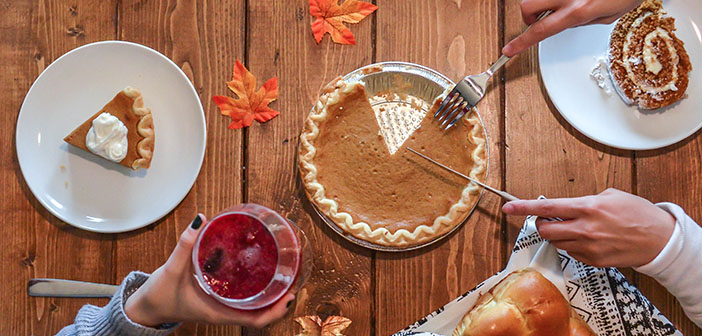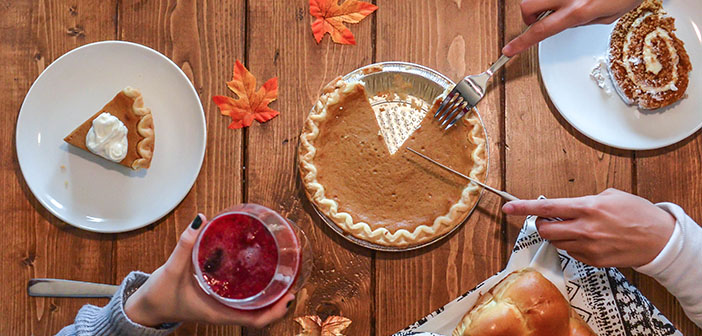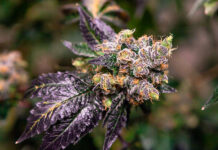
Pundits and politicians may debate which party was the bigger winner in the midterm elections, but one result is beyond dispute: Nov. 6, 2018, was a very good day for marijuana. Cannabis was on the ballot in four states and three (Michigan, Utah, and Missouri) passed pro-cannabis legislation. North Dakota was the lone naysayer, voting against a measure to legalize recreational marijuana.
These votes mean that recreational weed is now legal in 10 states and Washington, D.C., and medical marijuana in 33. The outcome also means it’s likely that cannabis will become a topic of conversation at holiday gatherings with friends and family.
We’ve prepared a cheat sheet for when Uncle Jeremy or Great Aunt Lily resurrect the arguments of the “Reefer Madness” era.
But, first, a few words: Don’t let weed wars ruin your family gathering.
Whatever the topic of a challenging conversation, experts tell us the most critical thing we can do is listen to the other person with openness and curiosity.
“You can’t move the conversation in a more positive direction until the other person feels heard and understood,” note the authors of “Difficult Conversations: How to Discuss What Matters Most,” who are also members of the Harvard Negotiation Project.
Advocacy is the strategy of last resort, advise authors Douglas Stone, Bruce Patton, and Sheila Heen. When you’re pushing someone to switch to your perspective, they’re going to push back. And that’s when things can start getting ugly over the green bean casserole or the vegan stuffing that Great Aunt Lily made especially for you.
So, along with the talking points below, keep this one in your back pocket: “Please pass the gravy. Isn’t this the best turkey ever?”
While anti-marijuana forces have long claimed that marijuana leads to the use of harder drugs, research doesn’t support this theory. Yes, there is a correlation, but that doesn’t mean there’s a cause and effect. In other words, the connection between marijuana use and later drug abuse might be compared to the relationship between, say, enjoying Slurpees as a kid and then going on to rob 7-Eleven stores. One action may precede the other without actually leading to it. Even the National Institute of Drug Abuse (NIDA) has concluded that “the majority of people who use marijuana do not go on to use other ‘harder’ substances…” taking care to note that if marijuana “primes the brain” for an appetite for other drugs, the same could be said of alcohol and nicotine.
And, here’s what we do know. According to public health researchers at Emory University in Atlanta, the implementation of medical marijuana laws did not lead to an increase in hard-drug use. The opposite, in fact, appears to be true.
2. Cannabis may be an effective tool in efforts to counter America’s opioid epidemic.
One 2017 study published in the Elsevier peer-reviewed journal Drug and Alcohol Dependence showed that in states that have some form of legalized marijuana, there was a significant decrease in hospitalizations for opioid dependence or abuse as well as a reduction in opioid overdoses. At the same time, there was no increase in hospitalizations related to marijuana.
Another study, published in 2018 in the Society for the Study of Addiction’s journal Addiction, demonstrated that in states where medical marijuana is available, opioid doses, spending, and prescriptions dropped by nearly 30 percent. And, you’ll be surprised to learn who’s among those benefiting the most from medical cannabis.
3. Medical marijuana is a boon to seniors dealing with hard-to-treat pain.
Opioid prescriptions among the Medicare generation — that’s people 65 and older — and those on Medicaid, which includes disabled people and those with low incomes, decrease dramatically when states make medical marijuana available. A study published in May 2018 by the Journal of the American Medical Association’s JAMA Internal Medicine revealed that in states where people can buy medical marijuana at a dispensary, the number of opioid prescriptions that are processed through Medicare and Medicaid decreased by 2.21 million daily doses per year.
That finding wouldn’t surprise Dr. Diana Martins-Welch, a New York geriatric physician who co-authored her own survey that found that two-thirds of older adults who use medical marijuana to manage chronic pain significantly reduced their dependence on opioid painkillers. “Seniors who use marijuana for pain are overwhelmingly positive about the experience,” she told Marijuana.com. “That’s why it’s really important to get marijuana legalized on a federal level so we can do more large-scale evidence-based studies that will point to the best ways more people, seniors especially, can be helped.”
4. Legalizing marijuana means safer products and safer ways to use them.
The cannabis that’s sold at dispensaries has been laboratory-tested for the presence of pesticides, solvents, mold, and other contaminants. What’s more, dispensaries offer cannabis in a wide range of formats, including tinctures, sublingual strips, vape pens, edibles, capsules, balms, patches, and suppositories.
This means that you can avoid the ill effects of smoking, a method even the most ardent medical marijuana practitioners advise against. “As physicians, we don’t like to recommend that people smoke in any form because, obviously, that’s not good for you,” Dr. Jordan Tishler, a Harvard-trained physician who runs InhaleMD, a cannabis-focused medical practice in Boston, told Marijuana.com. What’s more, other methods of consumption allow for more precise dosing and the ability to choose the onset and duration of marijuana’s effects that best suits whatever condition patients are trying to address.
5. Not all cannabis products make you high.
Cannabidiol (CBD) , isn’t intoxicating, but it has a wide range of therapeutic benefits, such as reducing inflammation or calming anxiety. What’s more, CBD can be combined with a very low dose of THC, its intoxicating sister compound, to address an even wider range of ailments, including menstrual cramps and nausea from chemotherapy. With the right ratio of CBD to THC, people won’t notice any mood changes or compromise in their abilities to do their normal activities, but they might well find themselves sleeping better and experiencing fewer aches and pains.
6. Legalized marijuana does not lead to higher rates of use among minors.
If it did, we’d be seeing an explosion in marijuana consumption among teens as more and more states have moved toward some form of legalization. That’s not happening. Rather, data collected by the Centers for Disease Control and Prevention (CDC) show that between 1995 and 2015, marijuana use among high school students dipped a bit. The percentage that had ever consumed cannabis dropped from 42.4 percent to 38.6 percent, while the percentage that had consumed marijuana at least once in the last month fell from 25.3 percent to 21.7 percent. Similar dips are being seen over the past few years in states such as Oregon, Colorado, and Alaska, all of which have recreational marijuana laws on the books.















